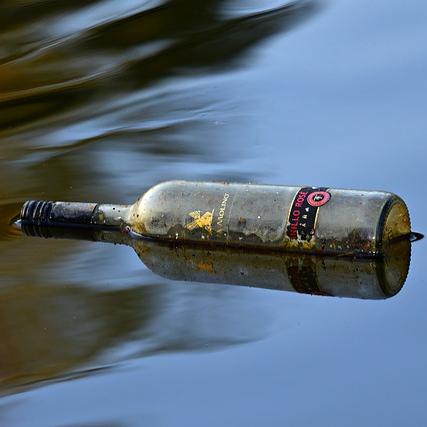Aligning the SDGs with Integrated Reporting


The International Integrated Reporting Council (IIRC) is the global body bringing business, investors and regulators together to drive reform in corporate reporting. "Integrated thinking," from the point of view of the IIRC, is critical to the global business community's agenda for the Sustainable Development Goals (SDGs), and to that end, the organization is making its case this week during the United Nations General Assembly (UNGA) and Climate Week NYC.
TriplePundit had an opportunity to catch up with the IIRC's president, Richard Howitt, while he was in New York City for Climate Week and several affiliated events. He discussed recent achievements of ‘breakthrough moments’ in the growth of integrated reporting; the planned new global strategic phase for the IIRC to be announced next week; and preparations for a major alignment project between different reporting frameworks, which have been part of discussions in New York City this week.
3p: What were you hoping to achieve this week at this week's UNGA and Climate Week NYC?
RH: Climate Week has brought the world’s business leaders with other key decision-makers together, and the IIRC is proud to be amongst our many key partners in a collective effort to review progress towards the SDGs and Paris Agreement, and to underline how integrated thinking and reporting has and will contribute to those efforts.
The IIRC is not only working with individual organizations on a micro level to adopt integrated reporting, but has a mission to reform and change the corporate reporting system in the world. This week is where the world meets and we are proud to be here.
3p: More regulatory bodies worldwide are mandating integrated reporting. What are the reasons you hear as to why this shift is occurring?
RH: Endorsement by regulators is playing an important role in giving added impetus to the growth in integrated reporting, evidenced by the Securities and Exchange Board of India’s call for the top 500 listed companies to adopt integrated reporting, its adoption by the Ministry of Finance in China and its inclusion in the European Union’s Directive on Non-Financial Reporting. However, we see equal weight in ‘soft law’ approaches, including the inclusion of integrated reporting in corporate governance codes from New Zealand to South Africa to Brazil.
The TCFD Task Force recommendations mark a turning point in the world where the ‘multi-capital’ approach is recognized as being a financial issue for the company too, and where the IIRC’s vision of financial stability and sustainable development coming together has been realized.
Regulators now recognize the real financial risks to whole economies of failing to address this very different approach to value creation, and the need to reform capital market rules to unleash long-term investment and to protect long-term returns.
3p: From your point of view, what are the biggest "breakthrough" moment for integrated reporting in the past year?
RH: The official position paper from the International Federation of Accountants (IFAC) that integrated reporting is "the future of corporate reporting" - no qualification, no conditions - is the surest sign yet that the financial community is embracing integrated reporting. The October 2017 decision of the International Accounting Standards Board to Review its guidelines for the narrative part of the company report ("the Management Commentary Practice Statement") partly to address integrated reporting, was a further huge step to move this in to the mainstream. The recommendations of the High Level Expert Group on Sustainable Finance called integrated reporting “the ultimate ambition," another key step in demonstrating that integrated reporting is a key tool as the world transitions to a sustainable financial system.
Lastly, the financial standard-setters and the sustainability frameworks - SASB, CDP, the GRI and CDSB - which combine together in the "Corporate Reporting Dialogue" convened by the IIRC, agreed a joint position statement in favor of the TCFD recommendations. In the next few weeks, we will announce a major alignment project starting with these recommendations, then going much further. It has the potential to be the biggest step yet in the integration of financial and non-financial reporting, a "breakthrough moment" not just for the past year, but for many years ahead.
3p: How can companies address the SDGs through integrated reporting?
RH: The IIRC has published a very practical guide for companies who undertake integrated reporting on how to integrate business reporting of the SDGs, authored by Professor Carol Adams. In it there are a series of case examples, including how AkzoNobel uses its integrated report to map each SDG against its supply chain, different products, and human resources; how Grupo Nutresa and SAB Miller integrate the SDGs in their business strategy; and how Unilever applies integrated thinking to seek to address the business challenges and opportunities which the the SDGs present.
3p: What have you been hearing from the investor community about integrated reporting over the past year?
RH: We are working with a coalition of investor organizations who haven’t simply endorsed integrated reporting and our objective of long-term value creation, but committed to using it in their day-to-day investor decisions. More investors are signing up to this approach and we invite more again. But ‘system change’ applies to the investment sector too, which is why we work with the Principles of Responsible Investment, the International Corporate Governance Network, the CFA Institute, the World Economic Forum and major investors including BlackRock - all members of our global IIRC Council - to debate and act together to create the conditions to shift upwards long-term investment. The Corporate Reporting Dialogue has agreed a joint approach on the future of reporting with an umbrella group of seven investor coalitions led by the PRI, which will be published shortly and demonstrate the high degree of alignment in our thinking.
3p: Integrated reporting has come a long way this decade, but clearly there is still a long road ahead. What are some of the IIRC's key goals for 2018-2019?
RH: For the forthcoming year, the key goals for the IIRC are to demonstrate and catalyze continued progress in the adoption of Integrated Reporting by advancing integrated thinking as a driver of effective corporate governance and bringing the adoption of Integrated Reporting to new markets and sectors, particularly the USA and China.
To do this, we are working harder to mobilize the ‘investor pull’ for Integrated Reporting, make it easier to adopt Integrated Reporting, regardless of sector or industry, and foster a policy and regulatory environment that supports moves towards Integrated Reporting. Just next week in Paris, we will launch a new global strategic phase for the International Integrated Reporting Council, which marks our achievement of a series of ‘breakthrough moments’ which we set ourselves. This will represent an intensification of our strategy towards the global adoption of integrated thinking and reporting. I welcome the presence of so many in our coalition in New York this week, to celebrate how far we have come, but have used the conversations of this week in readiness for the next steps we must take together.
Image credit: United Nations/Flickr


















